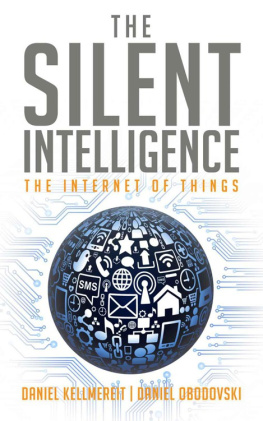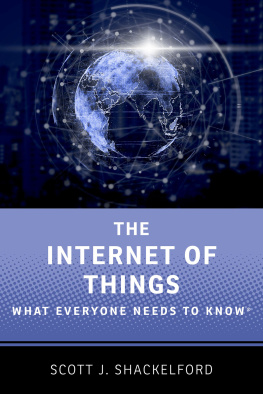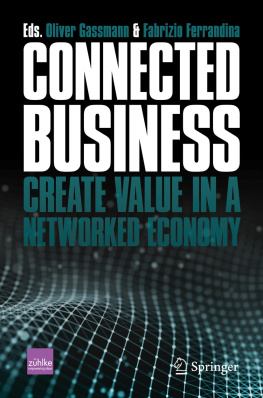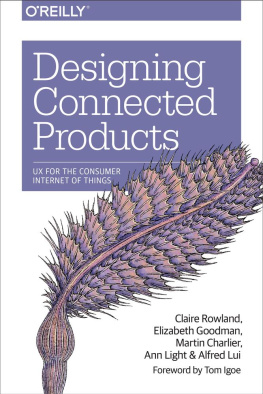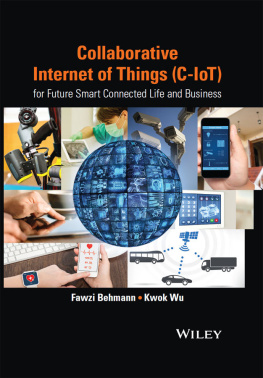Table of Contents

2013 Daniel Kellmereit and Daniel Obodovski
For information and requests, please contact:
For media contacts:
Web: www.thesilentintelligence.com
Facebook: https://www.facebook.com/thesilentintelligence
LinkedIn: http://www.linkedin.com/groups/Silent-Intelligence-Internet-Things-5036434
Twitter: @SilentIntelBook
YouTube: http://youtu.be/2-LvsxJ-ls0
ISBNs:
978-0-9899737-0-0 (Soft Cover)
978-0-9899737-1-7 (eBooks)
CONTENTS
FOREWORD
W hen Daniel Obodovski asked me to write the foreword to The Silent Intelligence, my first thought was, You mean the part of the book that most people skip over? I can do that. My second thought, once I realized he was serious, was, Um, sure. So here we are.
I was lucky enough to start participating in the Internet of Things movement in 1999, although at the time we were not at all sure how to even refer to the potential market. While I had always expected adoption to happen sooner, I am still very optimistic that everything will be connected. Its just a matter of time. In the early 2000s, we thought the benefits for companies to connect their products were so obvious that there would be a revolution and that it would be over in a few years.
Why would any company delay in making a relatively small investment in a technology that enhances their brand, lowers their costs, provides better customer service, differentiates their product offerings, builds recurring relationships with customers, provides higher customer satisfaction and more? In fact you could even turn on your coffee machine at work remotely! It was so obvious to us that we thought people would just do it, and within three to five years the whole world would be connected. In fact, sometimes we worried we might be too late to the dance.
In retrospect, like most adoptions of a disruptive technology, it didnt happen in two years. Or even five. Adoption of M2M has been distributed across many markets, and fourteen or fifteen years later, it feels like it has snuck up on us.
Why has it taken so long for the world to catch on to what some of us have known for over a decade? It is because in the majority of cases, new technologies that can disrupt business models take much more time to be accepted than anyone in that market wants or expects. In the U.S. market, it took cell phones about twenty years to get to major mass-market penetration. Cloud computing (think Software as a Service, timesharing) can trace its origins back many, many years. With a handful of exceptions, tablets being possibly the best-known outlier, technology adoption takes years.
I think we were fooled, like many early market entrants, into thinking we would move right from the visionary customers and early adopters directly into mainstream adoption. The reality, well explained in Geoffrey Moores book Crossing the Chasm, is that in order to get across that chasm between the early adopters and the early majority, you need to package that technology into something that is easy for companies to consume. This means not only offering a complete solution, but offering it from brands that are trusted and companies that provide global scale.
One method I use to get a sense of where we are in market maturity is what is happening to the early entrants in an ecosystem. Are they burning through venture capital, announcing the same customers over and over, going out of business, merging with other small players, or getting acquired by big players interested in the space? A significant indicator for M2M was that once the wireless carriers got involved in mergers and acquisitions, that the tipping point into mass adoption was occurring.
This is exactly what I experienced. First Qualcomm acquired my M2M platform company, nPhase, in 2006. This was a huge validation for the market space and a call for others to start looking more seriously at the sector. Then, a couple of years later, we spun it out as a joint venture between Qualcomm and Verizon Wireless and eventually sold it to Verizon Wireless.
What is the significance of wireless carriers entering a space by M&A? From my perspective, it is that their channels touch almost every company in the world. When they focus on an initiative, they have the ability to raise the water level and dramatically increase the market size. And that is exactly what they are doing.
The funny thing is that when the mass adoption does come, it seems like no big deal. Over time we become acclimated to new technology. In fact, it is almost when the technology doesnt seem so gee-whiz anymore that mass-market adoption has occurred. It becomes an invisible, silent, part of our everyday experience.
Well, that feels to me like where we are with M2M and the Internet of Things. I am not sure if you can even buy a car today that does not come standard with connectivity, or at least have it available as an option. You expect that your e-reader or tablet is going to seamlessly connect to the cloud somewhere and download your book or newspaper. You expect that you can track the progress of your FedEx package or even the pizza delivery driver. You expect your printer to tell you that you are out of ink, you expect to track plane flights online, and that when you have a problem with your (computer, air compressor, construction equipment, MRI machine, truck, whatever) that someone can remotely connect in and at least diagnose a problem, if not actually fix it. That is the promise of a connected world. And it is here, albeit quite a bit later than I thought it would be.
This is why I think this is a perfect time for publication of The Silent Intelligence. The Internet of Everything is still not that well understood in the general business community, and this book brings organization to a complex market. It includes interviews with many of those who have taken an active part in developing the market. It provides multiple, valuable perspectives of the Internet of Things. You will learn about some of the obvious and not-so-obvious impacts this technology is having on our everyday lives and how you can apply these concepts going forward. You will read about some of the ways companies are leveraging these capabilities to enhance their businesses. And on the way, you will enjoy an entertaining, informing, and informed read by two authors whom I greatly respect.
Steve Pazol
April, 2013
INTRODUCTION
O n a cold day in November 2011, the two of us were sitting in the conference room of Detecon USA, on the top floor of a high-rise overlooking the stunning San Francisco Bay, discussing technology trends. We used to discuss things like cloud services, big data, mobile health care, and so on. We had these discussions every couple of months, and it seemed like the view of the San Francisco Bay encouraged big thoughts and interesting ideas. We often talked about the Internet of Things, or Machine-to-Machine (M2M) connectivity, which is a more technical term for it. The topic appeared confusing on one hand and exciting on the other, because it was incorporating many other technology trends.
Its hard to know which one of us first came up with the idea to write a book about M2M, but we both loved the idea immediately and decided to embark on this project. Indeed, Benjamin Disraeli once said, The best way to become acquainted with a subject is to write a book about it. Little did we know what we were getting ourselves into
Like a lot of people in the industry, we were intrigued by the emerging growth of Machine-to-Machine communication. Our respective skill sets and backgrounds are complementary Daniel Kellmereit is the CEO of a top consulting company; hes written several books and has a well-structured, analytical mind. Daniel Obodovski has led multiple M2M projects at Qualcomm and has practitioners experience. Both of us have an extensive network of contacts in the technology/information systems industry, and specifically in the M2M space.
Next page
